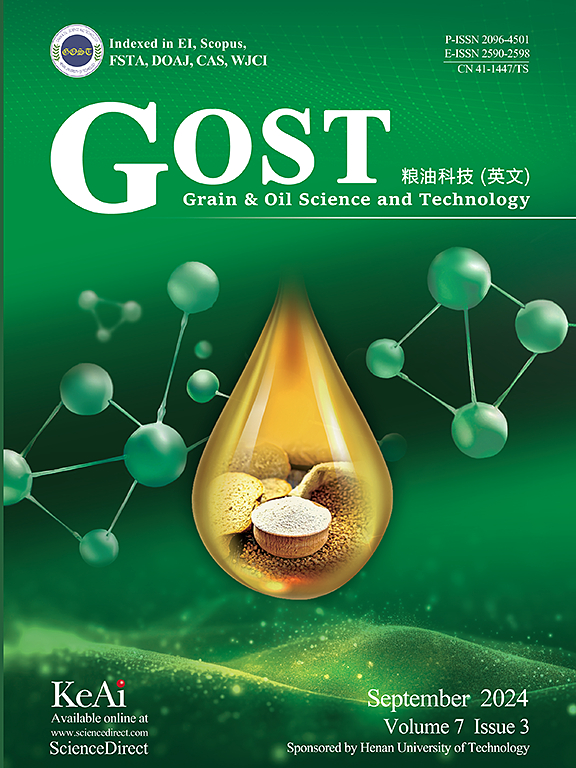Status and distribution of selenium in selenium-enriched peanut sprouts
Q2 Agricultural and Biological Sciences
引用次数: 0
Abstract
Selenium is one of the essential trace elements in human body, however, due to the limitation of geographic factors, the intake of selenium is seriously insufficient in most regions. In this study, selenium-enriched peanut sprouts with high selenium content were prepared by soaking peanut seeds in sodium selenite. The content and distribution of selenium in germinated peanuts were investigated. The results showed that 200 μmol/L sodium selenite and germination for 6 days resulted in the highest total selenium, organic selenium content, and organic selenium conversion in peanut sprouts. Selenium exists in peanut sprouts mainly in organic selenium form, of which selenoproteins are the most critical organic selenium carriers. ABTS free radical scavenging capacity and reducing power assays showed that alkali-soluble protein had the highest antioxidant activity among the four soluble proteins, attributed to its high selenium binding level. Radicle and cotyledons of peanut seedlings were significantly enriched with selenium compared to hypocotyl. Amino acid analysis and SDS-PAGE results showed that selenium increases significantly after peanut germination and selenium enrichment. This study provides a simple, environmentally friendly, and effective way of selenium enrichment and offers a theoretical basis for applying selenium-enriched foods in food and medicine.

富硒花生芽中硒的状况和分布
硒是人体必需的微量元素之一,但由于地理因素的限制,大多数地区硒的摄入量严重不足。本研究采用亚硒酸钠浸泡花生种子制备高硒富硒花生芽。对发芽花生中硒的含量和分布进行了研究。结果表明,在200 μmol/L亚硒酸钠处理下萌发6 d,花生芽中总硒、有机硒含量和有机硒转化率最高。花生芽中硒主要以有机硒的形式存在,其中硒蛋白是最重要的有机硒载体。ABTS自由基清除能力和还原能力试验表明,碱溶蛋白具有最高的抗氧化活性,这主要归因于其高硒结合水平。与下胚轴相比,花生幼苗的胚根和子叶中硒含量显著增加。氨基酸分析和SDS-PAGE结果表明,花生萌发和硒富集后硒含量显著增加。本研究提供了一种简单、环保、有效的富硒方法,为富硒食品在食品和医药中的应用提供了理论依据。
本文章由计算机程序翻译,如有差异,请以英文原文为准。
求助全文
约1分钟内获得全文
求助全文
来源期刊

Grain Oil Science and Technology
Food Science
CiteScore
7.30
自引率
0.00%
发文量
69
审稿时长
12 weeks
期刊介绍:
文献相关原料
公司名称
产品信息
上海源叶
n-hexane
¥22.00~¥105656.00
上海源叶
Methanol
¥14.00~¥55867.47
上海源叶
Sodium hydroxide
¥15.00~¥24697.17
上海源叶
Perchloric acid
¥73.90~¥19600.90
上海源叶
Nitric acid
¥62.00~¥17040.90
上海源叶
Sodium selenite
|
98%
¥52.00~¥9423.00
上海源叶
Hydrochloric acid
¥16.00~¥5635.43
 求助内容:
求助内容: 应助结果提醒方式:
应助结果提醒方式:


